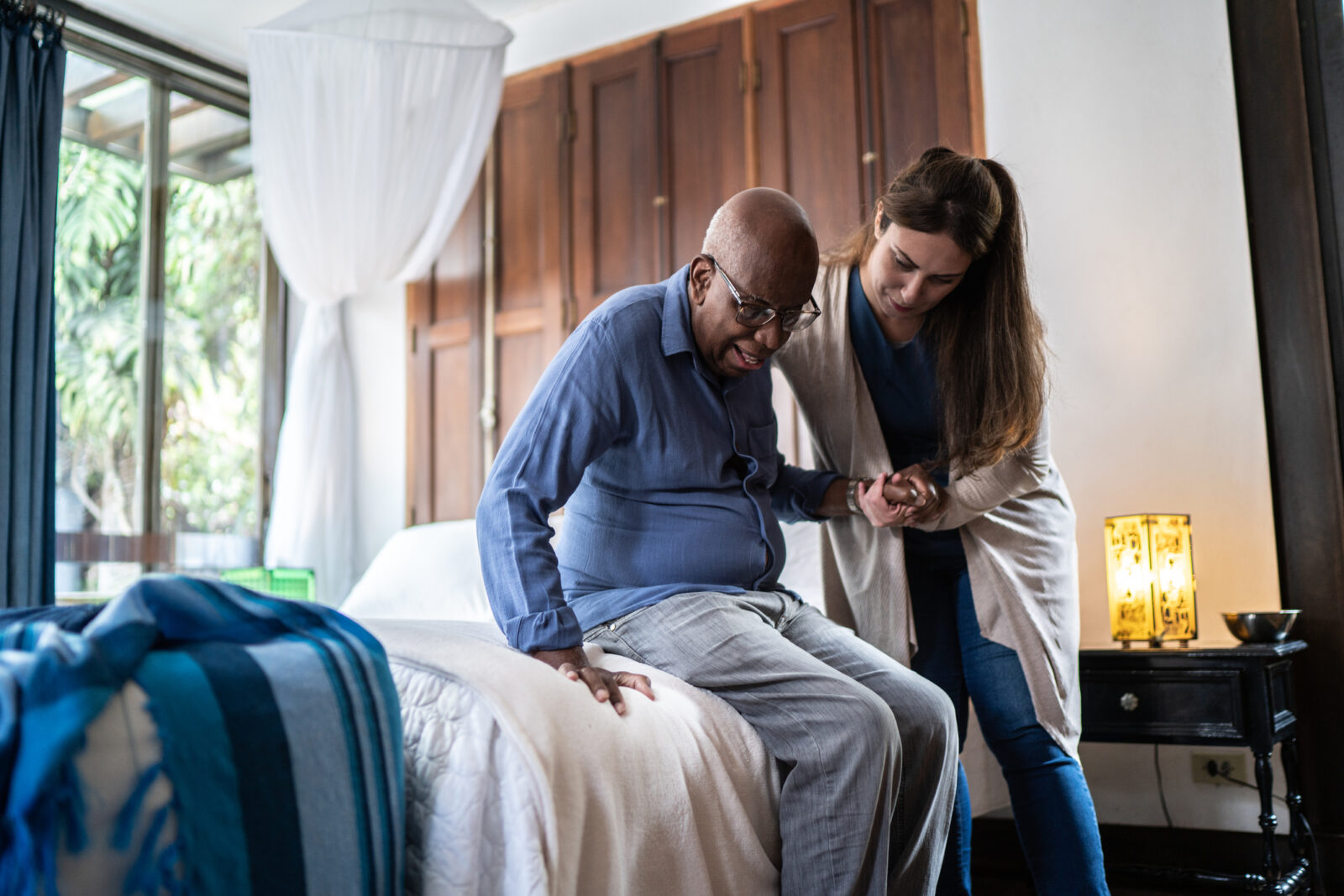Home Care & Hospice

As we age, we may need a little help, or we may need a lot of help – especially toward the end of life. November is National Home Care and Hospice Month, a great time to learn how these two types of health care services ensure people can live their best life as long as possible.
What is home health care?
Home health care is exactly what it suggests: medical care that takes place in an individual’s home. Recent research has confirmed this specialized care can help people heal faster and reduce costs by 40%. Home health care is usually referred to when a person has a chronic illness or is recovering from a surgery, injury, or serious illness. The purpose of home health care is to help people regain independence and self-sufficiency, maintain current levels of health and abilities, and slow any additional decline that may occur.
Home health care providers spend time with both the patient and their medical providers to determine how best to support the patient with their health goals and needs. In addition to making regular visits, home health care aides may assist with:
- taking care of any pressure sores or surgical wounds;
- educating the individual and any caregivers on the medical condition and care;
- provide injections, including intravenous medicines and fluids (depending on the staff’s licensing and the state);
- assessing nutritional needs for best outcomes; and
- monitoring the overall health status.
Home health care encompasses a wide variety of skilled care services, including physical, occupational, and speech therapies, as well as skilled nursing and medical social services.
What is hospice care?
Hospice care happens when a cure is no longer an option, and the person is expected to live six months or less. Hospice has been shown to benefit not just the individual but also their loved ones and caregivers by increasing the quality of life and pain relief while reducing physical distress and prolonged grief. The purpose of hospice is to support individuals and their loved ones as they prepare for the end of life. Hospice care is provided wherever the person lives, whether it’s in a private residence, facility, or someplace else.
A team of doctors, nurses, social workers, and others work together to provide comprehensive care that includes medical equipment. Like home health care, medical team visits are routine; other support involves:
- delivering non-medical support, such as bathing and religious counseling (if wanted);
- ordering needed supplies from oxygen to bandages;
- managing pain and other symptoms using drugs as well as non-pharmaceutical methods;
- relieving family caregivers for a short term to prevent burnout; and
- counseling for grief and loss for the individual and their loved ones.
Hospice is not 24/7 care, nor is it meant to replace nursing home care. Although it happens at the end of life, the focus is not on how a person wants to die, but rather how that individual wants to live for the remainder of the time they have left.
Every person’s health care and end-of-life journey is as unique as they are. Home health and hospice care place the individual at the center, so the care is exactly what they need.
![Charlesgate [logo]](https://www.charlesgate.net/wp-content/uploads/sites/218/2016/12/logo-new.png)